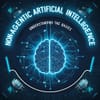Artificial intelligence (AI) can be categorized into different types based on its capabilities and characteristics. One such type is non-agentic AI, which refers to systems that operate reactively without autonomy, intention, or goal-directed behavior. These AI models produce outputs in response to inputs, lacking internal motivation or decision-making capabilities.
Non-agentic AI is designed to perform specific tasks, such as text summarization, image classification, or speech-to-text conversion. These systems are predictable, reliable, and easier to test and validate, making them suitable for applications where safety and accuracy are crucial.
Unlike agentic AI, which can pursue objectives and adapt to changing situations, non-agentic AI sticks to its programming and doesn't take actions beyond its immediate task. This characteristic makes non-agentic AI less likely to exhibit unexpected or harmful behavior, which is a significant advantage in many applications.
Examples of non-agentic AI include text completion models, image classifiers, speech-to-text engines, and recommendation systems. These systems are widely used in various industries, including customer service, healthcare, finance, and entertainment.
While non-agentic AI offers several benefits, including safety, reliability, and efficiency, it also has limitations. Its lack of flexibility and adaptability makes it less suitable for complex tasks that require dynamic decision-making.


